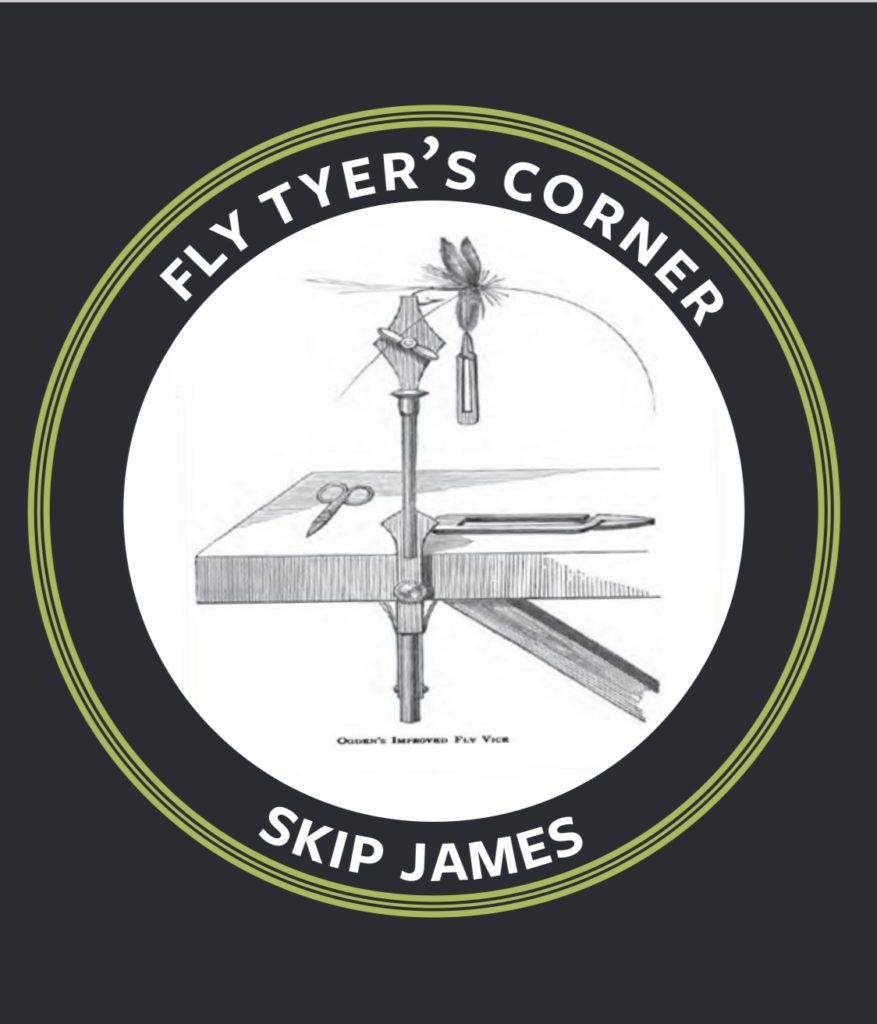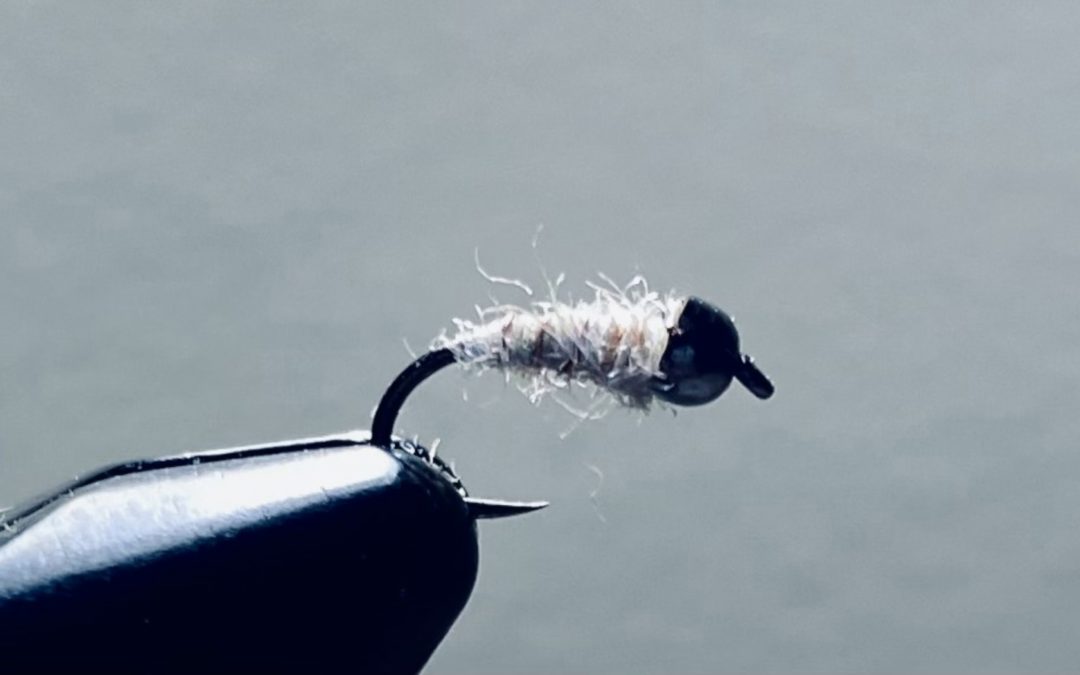
Skip’s Winter Nymph
Hook: # 20 Wet-fly hook with down-turned eye
Bead: 2.8 mm Black counter-sunk Tungsten bead (bead can be sized up or down)
Thread: 8/o Uni-thread, color optional
Rib: Copper wire, small or extra small
Dubbing: Any spikey dubbing with some flash, here SLF was used. (Hare’s Ear would
also work)
• Place the bead on the hook by inserting the hook point into the
small hole. Slide the bead up to the hook-eye.
• Attach the thread directly behind the bead and take a few turns to
secure the thread.
• Insert the wire directly into the bead and wrap the thead over it
down to the bend of the hook while keeping the wire on top of the
hook.
• Take a small pinch of dubbing (remember, less is more) and form a
short dubbing noodle. Wrap the dubbing tight against the back of
the bead.
• Advance the wire to the back of the bead by making spiral turns. Try
to get at least four turns evenly spaced. Tie off the wire and either
snip or break it off.
• Whip-finish and add a dab of head-cement to finish off the fly
Fish this pattern with split shot and strike indicator near the bottom. When you see a group of fish feeding on midges, it is very likely that a few will be rising and the rest will be taking emerging pupa or larva near the bottom. Try both places. If you encounter a midge hatch in which balls of mating insects occur, use a small Adams; it works well as a midge cluster.
Rises to midges are very tiny and your imitation might be hard to see. If that’s the case, a leader greased within a few inches of your fly helps to pinpoint
it. Also, it is quite proper to use an indicator with a dry imitation. Good luck!


